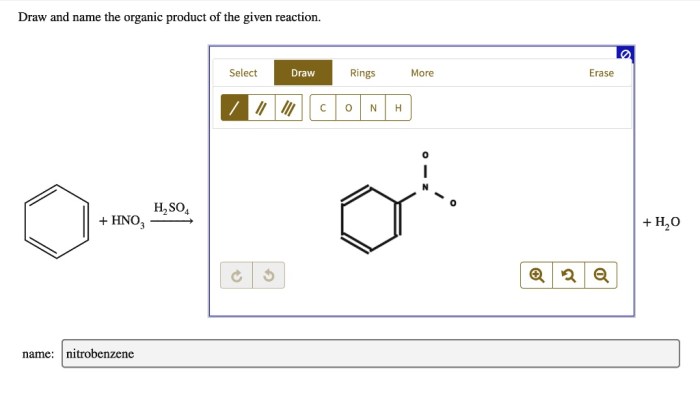Draw the organic product of the given reaction embarks on an enlightening journey into the captivating realm of organic chemistry, where we unravel the intricacies of chemical transformations and decipher the nature of their products.
Delving into the depths of this captivating topic, we embark on a quest to decipher the enigmatic language of organic reactions, unraveling the secrets of reactants and products alike. Our expedition commences with a thorough examination of the fundamental principles governing organic reactions, laying the groundwork for our exploration of product identification and representation.
Draw the Organic Product of the Given Reaction

Organic reactions involve the transformation of one or more organic compounds (reactants) into new organic compounds (products). The organic product is the final result of the reaction and has a unique molecular structure that can be determined by analyzing the reaction mechanism and applying chemical knowledge.
Interpreting the Reaction
To draw the organic product, we first need to understand the given reaction and identify the reactants involved. We then analyze the reaction mechanism to determine how the reactants interact and transform into products.
Organic Product Identification
Once we have a clear understanding of the reaction mechanism, we can determine the structure of the organic product. This involves identifying functional groups and molecular arrangements based on chemical knowledge and reaction patterns.
Structural Representation
The organic product can be represented using structural formulas or line-angle formulas. Structural formulas show the arrangement of atoms and bonds, while line-angle formulas provide a simplified representation of the molecular structure.
Additional Considerations, Draw the organic product of the given reaction
When drawing the organic product, we need to consider factors such as reaction conditions and catalysts, which can influence the formation of the product. Additionally, we need to consider regio- and stereochemistry, which determine the specific orientation of atoms and functional groups in the product.
FAQ Guide
What is an organic product?
An organic product is a compound that contains carbon atoms covalently bonded to hydrogen, oxygen, nitrogen, or other carbon atoms.
How do I draw the organic product of a reaction?
To draw the organic product of a reaction, you need to identify the reactants, determine the reaction mechanism, and apply the rules of organic chemistry to predict the structure of the product.
What is the significance of regio- and stereochemistry in product identification?
Regio- and stereochemistry are important factors to consider in product identification because they can affect the physical and chemical properties of the product.

